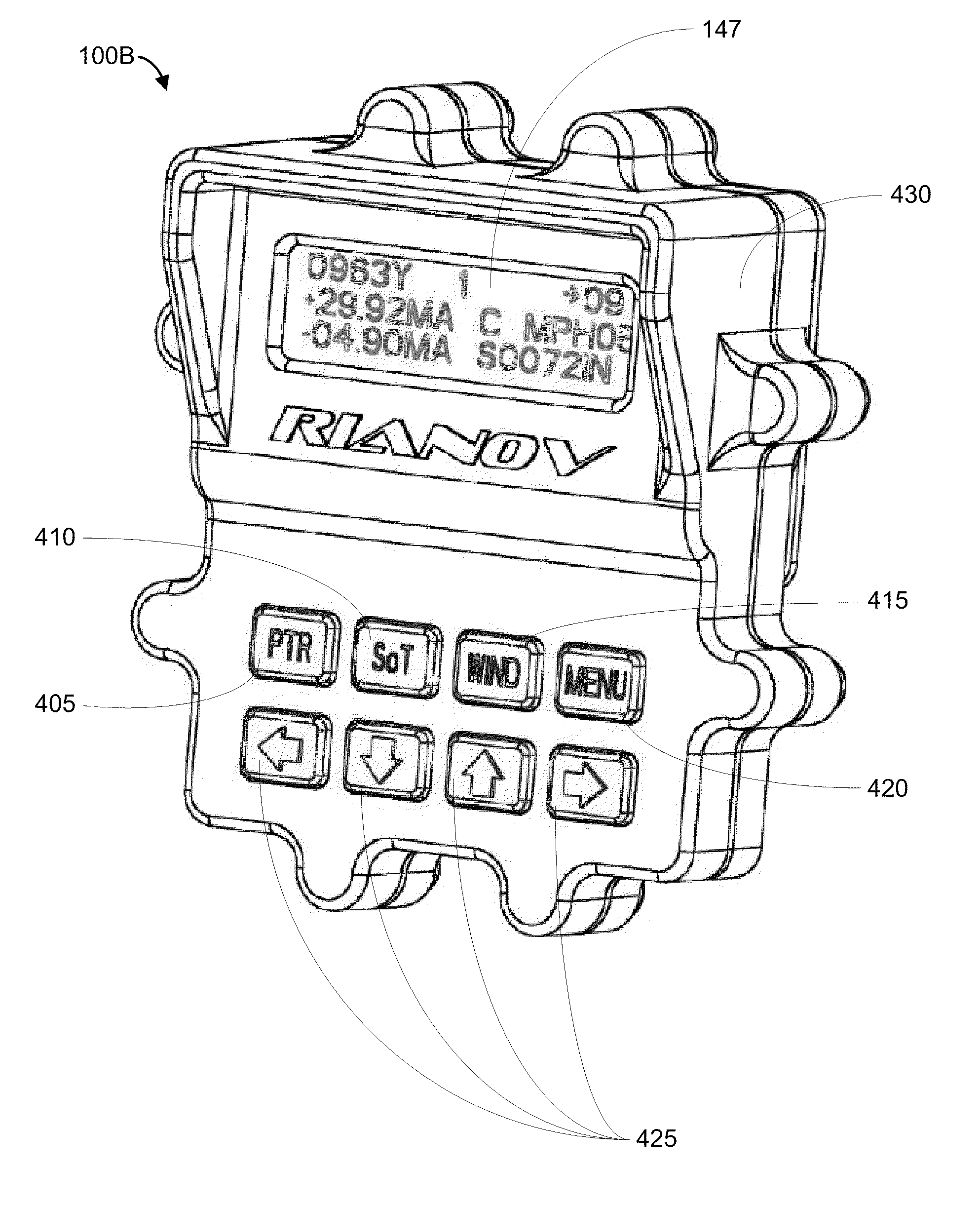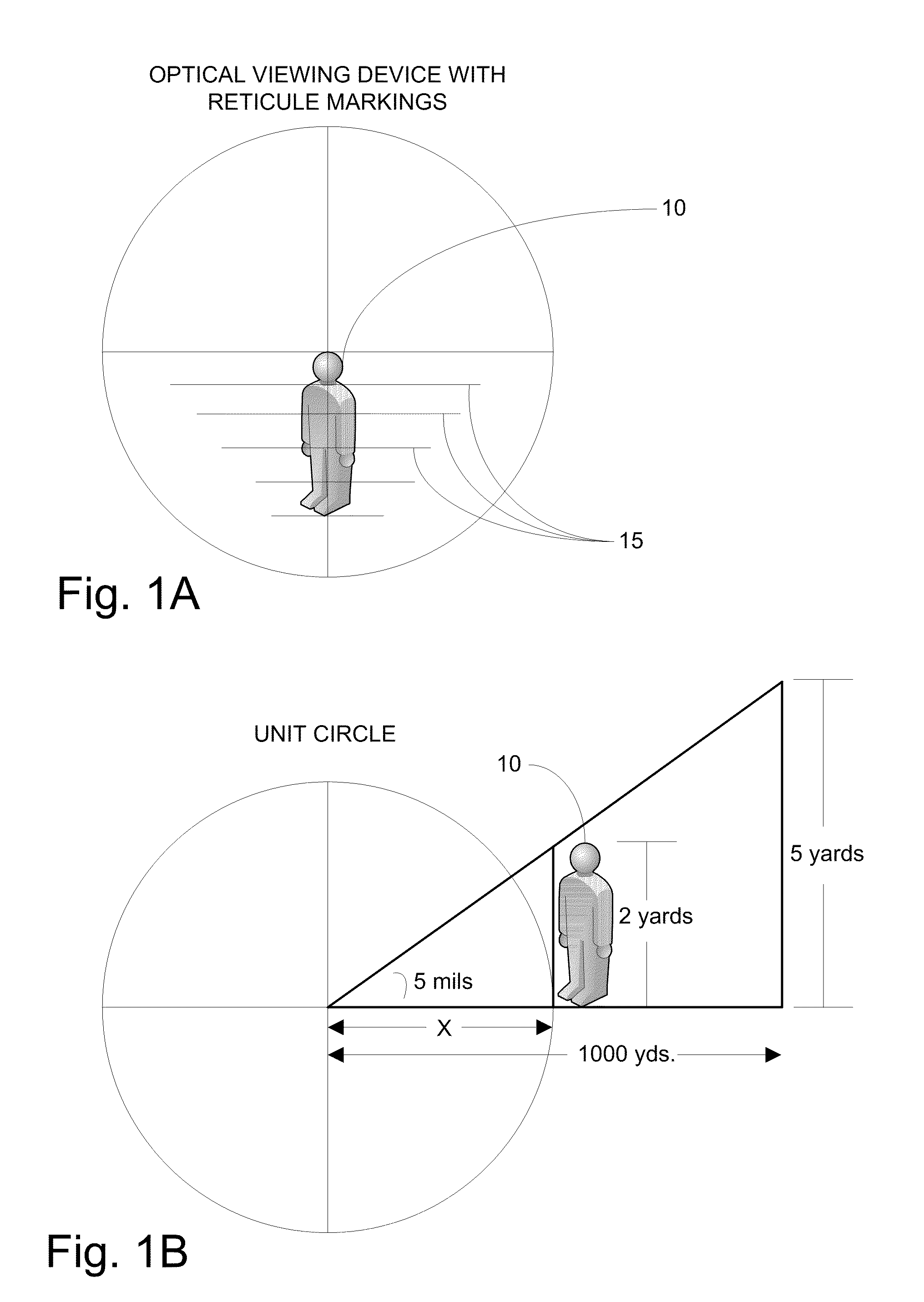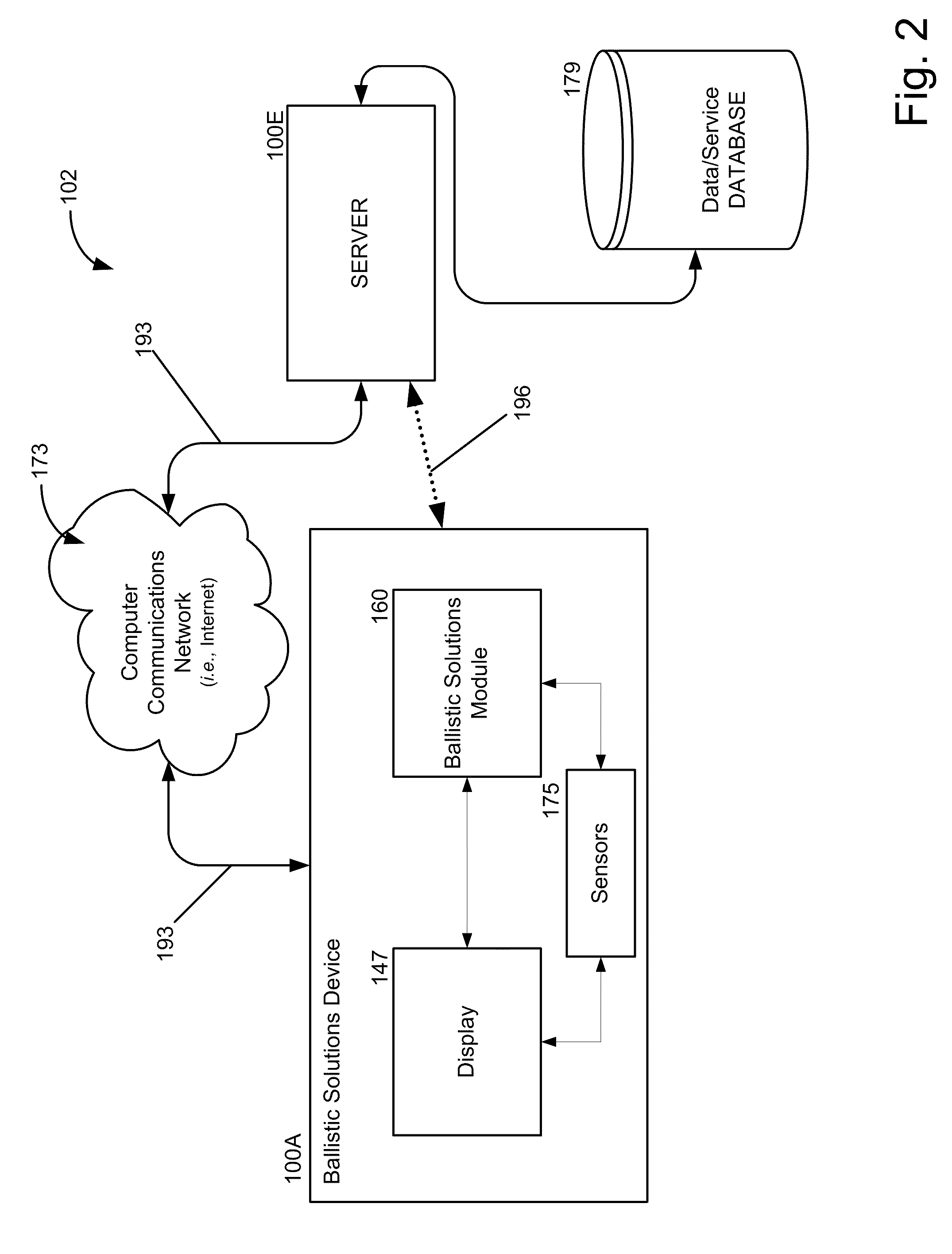[0020]The presently disclosed embodiments, as well as features and aspects thereof, are directed towards providing a
system, device and method for calculating comprehensive ballistic solutions, or portions thereof, via a varying
magnification optical range determining and ballistic trajectory calculating apparatus (also referred to as a ballistic solutions device). Advantageously, embodiments of a ballistic solutions device drastically reduce marksman error in milling targets by employing a measurement component configured to measure angular movement of a mechanically coupled optical viewing device, thus delivering consistently accurate
distance to target estimations. Additionally, embodiments of a ballistic solutions device may also comprise features and aspects that enable a user to leverage available real-time
field data such that error associated with the measurement of those data variables is minimized prior to calculating and rendering a comprehensive ballistic solution derived from stored Data Observed from Prior Engagements (DOPE).
[0022]Consider the prior art method of a marksman estimating the number of mils in a reticule that are taken up by a target. With a ballistic solution device comprising an
inclinometer and mechanically coupled to the marksman's weapon, the plurality of graduated reticule markings is not required for
ranging the target. The marksman needs only to place a single reticule marking at the bottom of the target and then translate it to the top of the target—the
inclinometer can measure the
angular rotation of the marksman's
rifle as the reticule marking is translated. The accuracy of the marksman's reticule marking translation from the bottom to the top (or the top to the bottom) of the target is drastically improved over the alternative method of a marksman estimating how many mils the target would take up in the reticule. With the angle known via the
inclinometer, and the target height known or accurately estimated, the distance can be calculated via the
tangent function of the measured angle.
[0023]Notably, it will be understood that a ballistic solutions device with a comprised inclinometer may also be used to accurately calculate the height of an object at a known distance. For example, if the distance to an object is known, the methodology described above could be used to “mil” the object, whereby the
tangent function could be employed to solve for the object height.
[0026]It will be understood that embodiments of a
ballistics solutions device may comprise all, or just some, of the features and aspects outlined above and below. A particular embodiment configured to receive DOPE may leverage user inputs and / or sensor inputs, in conjunction with the calculated range derived from the inclinometer measurement, via algorithms known in the art of
physics, in order to arrive at a comprehensive ballistic solution. That is, by incorporating the known and accurately estimated data, the DOPE may be algorithmically manipulated such that an accurate, real-time custom ballistic solution is delivered. Notably, while much of the ballistic algorithms that may be applied to DOPE data in order to calculate a ballistic solution based on field condition variables are known, the accuracy of the measurement of the
field conditions directly correlates with the accuracy of the resulting ballistic solution. As such, one of ordinary skill in the art will recognize that embodiments of a ballistic solution device that comprise real-time sensors configured to measure field variables may deliver more accurate ballistic solutions than devices presently used in the art which require the user to estimate those field variables. Of course, it will also be understood that various embodiments of a
ballistics solutions device may be configured such that the user can override or eliminate the consideration of a sensor input in favor of a manual input or none at all.
[0028]As an example, a marksman may input known or estimated
field conditions, such as
crosswind strength, and, in conjunction with sensor inputs from sensors comprised within the exemplary ballistic solutions device, a comprehensive card may be generated for those specific conditions, wherein the card is generated from a stored baseline ballistic curve or baseline DOPE data that has been mathematically manipulated in light of the various inputs. The card may
relay the adjusted data in terms of distance to target, MILS, MOA or the like. Advantageously, embodiments that are configured to output a card can provide a marksman with accurate adjustments to existing DOPE such that the marksman is not required to calculate those adjustments on a shot by shot basis. Moreover, other embodiments may generate a shot-specific output from pre-loaded manual and sensor inputs such that the marksman needs only to use the inclinometer functionality of the ballistic solutions device in order to trigger the generation of a real-time, shot-specific solution.
 Login to View More
Login to View More  Login to View More
Login to View More 


